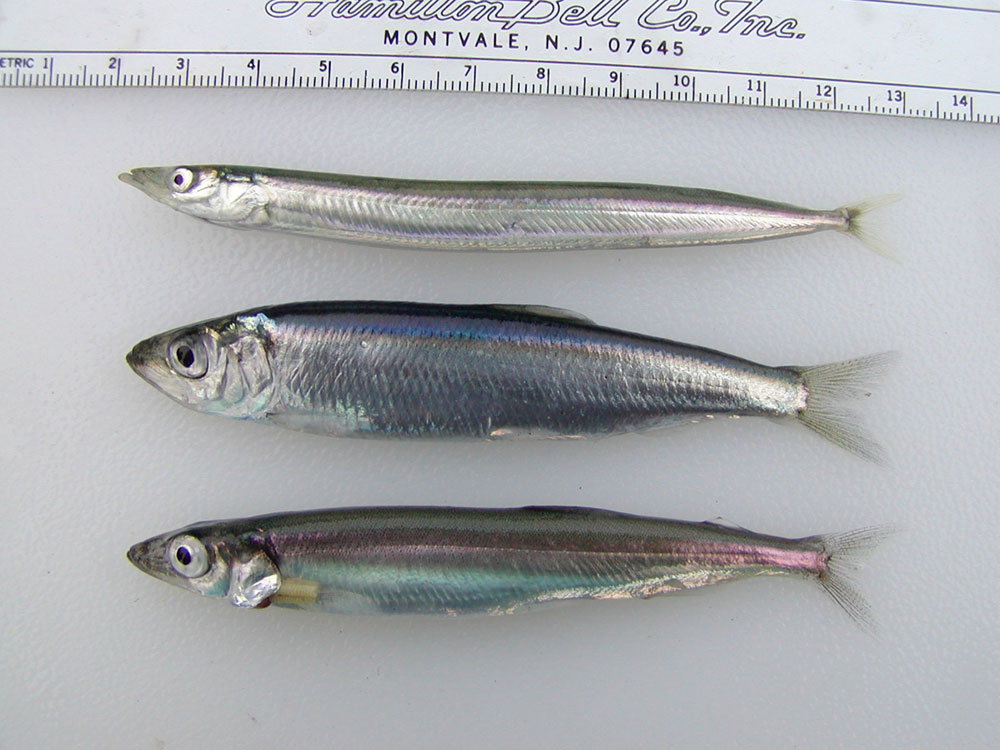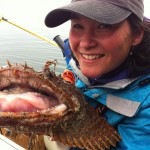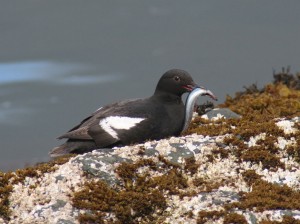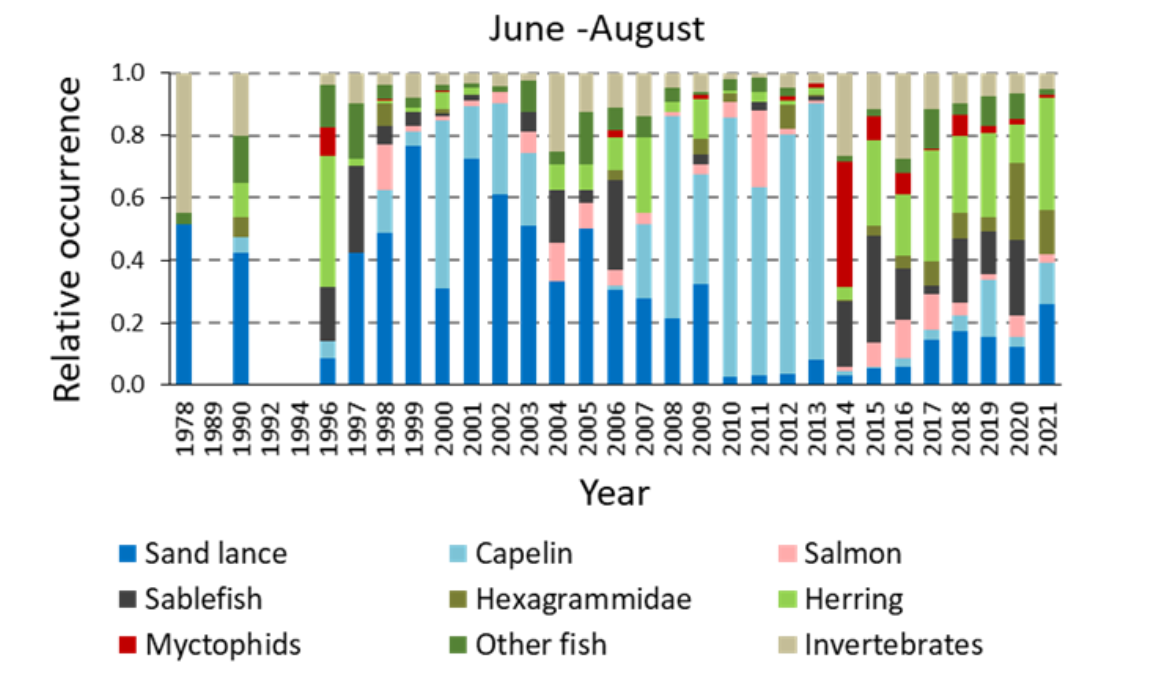A million-strong we cling
to avoid the searching maw
Do seabirds smell our fear?
Why are we sampling?
Changes in the abundance of forage fish (small, schooling fish that are the prey species of larger fish, marine birds, and marine mammals) can have dramatic effects in marine ecosystems because much of the energy transferred from lower to upper food web levels passes through these species. Forage fish typically produce a large number of offspring and have short lifespans, meaning their abundance and distribution can fluctuate dramatically in response to environmental variation. The response of animals that prey on forage fish to fluctuations in forage fish abundance depends on the predator’s ability to shift its foraging behaviors and the relative nutritional value of each species of forage fish and other types of prey in their diet.
Where are we sampling?
Our study includes surveys throughout Prince William Sound and a seasonal monitoring station on Middleton Island in northern Gulf of Alaska. More information about ongoing seabird monitoring and research is available at: https://middletonisland.org/.
How are we sampling?
The primary objectives of the forage fish monitoring project are to: 1) monitor the status and trends of forage fish in areas with known persistent aggregations of predators and prey during fall, and 2) support annual field and laboratory efforts to continue the Middleton Island long-term seabird diet index in spring/summer, 3) assess changes in forage fish abundance indices on acoustic-trawl surveys during summer, and 4) support Herring Research and Monitoring program aerial survey validation efforts in summer.
To meet our first objective, we integrate directly with the humpback whale and marine bird predation studies to provide estimates of forage biomass in the immediate vicinity of predator aggregations. To meet our second objective, in a collaboration with the Institute for Seabird Research and Conservation, we use seabirds as samplers of forage fish at Middleton Island to continue the long-term seabird diet data collection program as a cost-effective means to monitor forage fish stocks in the northern Gulf of Alaska. To meet our third objective, we conduct multi-frequency hydroacoustic transects and trawls to identify species composition and size distributions of ensonified targets. To meet our fourth objective, we sample fish schools from a vessel on the water under the direction of the aerial survey team to validate their observations.
What are we finding?
The acoustic fish and macrozooplankton indices, based on surveys conducted in September from 2017 to 2019 and 2021 to 2022, reveal interannual variability in abundance. Sand lance were infrequently encountered in Montague Strait in 2018 and 2021, with capelin mostly absent except for small aggregations in 2019 and 2022. Juvenile herring and pollock biomass varied by region and year. Adult herring and walleye pollock biomass peaked in Port Gravina and Montague Strait in 2021. Macrozooplankton indices were generally low between 2017 and 2021 but increased in all subregions in 2022.
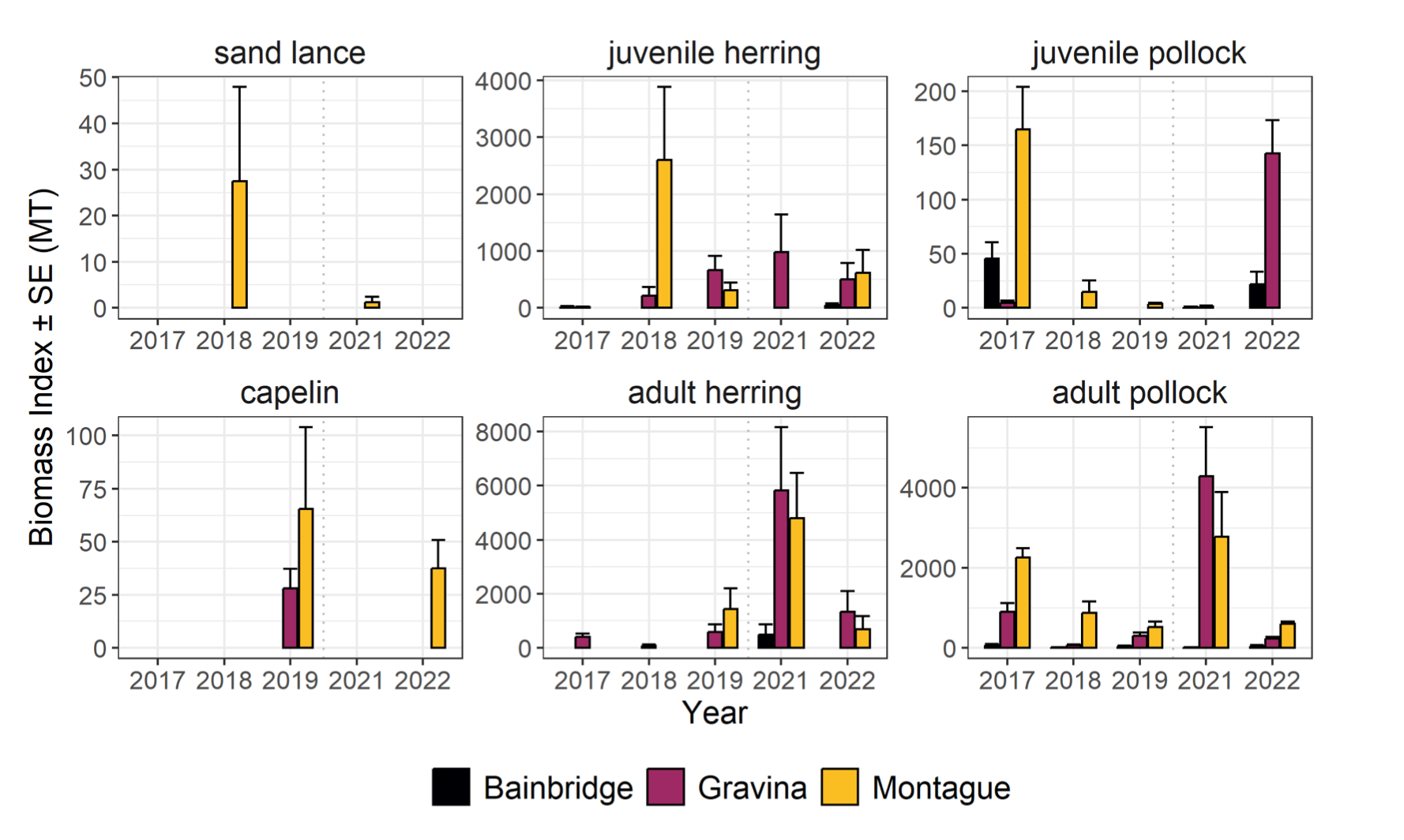
Acoustic indices of forage fish biomass by region and year in Prince William Sound, Alaska during September (±1 SE). No sampling was conducted in 2020 (dashed line).
The composition of macrozooplankton species in Prince William Sound (PWS) during summer and fall surveys was determined from samples collected in midwater trawls. From 2015 onwards, macrozooplankton communities were primarily dominated by two euphausiid species: Thysanoessa spinifera and Euphausia pacifica. However, prior to 2015, Thysanoessa raschii and Thysanoessa inermis occurred in greater biomass proportions than in the years following. This indicates a shift in the dominant euphausiid species in the macrozooplankton communities of PWS, with Thysanoessa spinifera and Euphausia pacifica becoming more prevalent starting in 2015. The changes in macrozooplankton species composition may be influenced by various environmental factors and could have implications for the broader marine ecosystem.
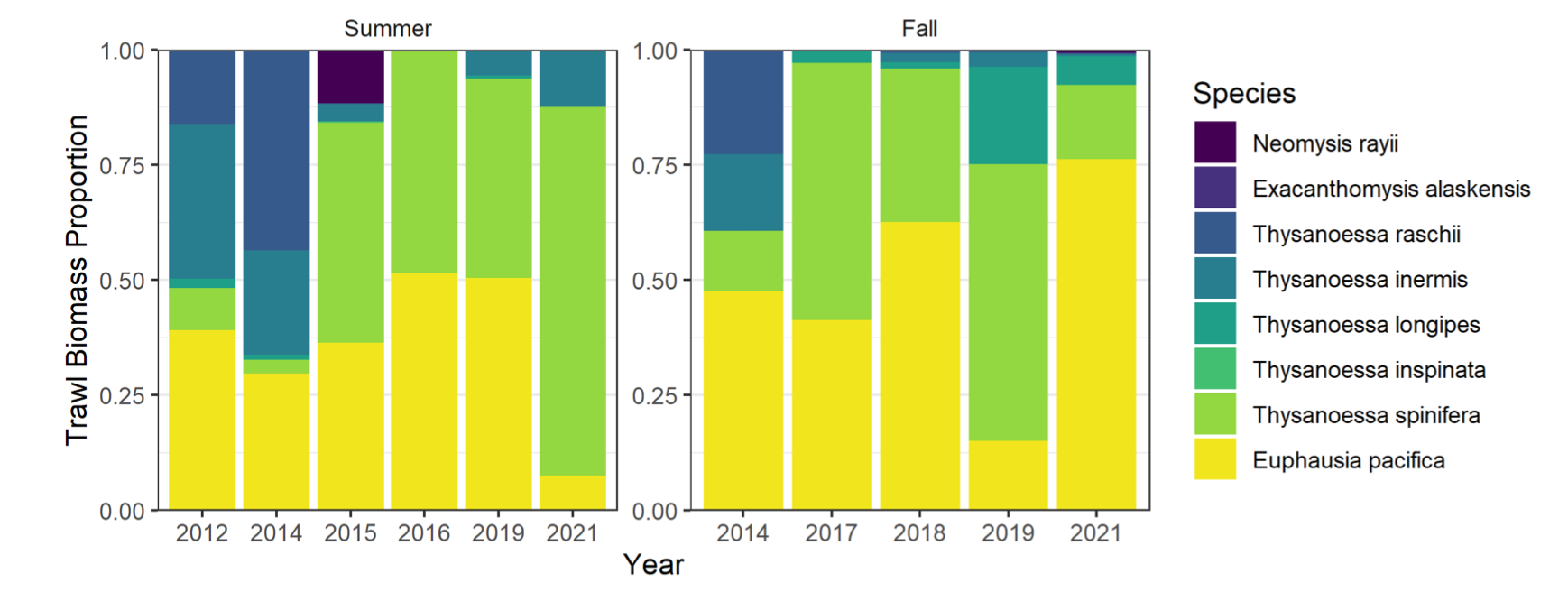
Trawl biomass proportions for macrozooplankton by year and species (color) during summer (June-July) and fall (September) surveys in Prince William Sound.
A species new to the list of seabird prey at Middleton Island, chub mackerel (Scomber japonicus), was first encountered in 2019 (4 occurrences) and increased to 15 occurrences in 2020. The species was observed in late-season samples obtained from black-legged kittiwakes. The co-occurrence of chub mackerel in samples with myctophids, squid, and pelagic crustaceans suggests that these mackerels are coming from the pelagic zone south of Middleton Island. Importantly, this is an area where only kittiwakes are known to forage regularly.
In 2021, large herring (mean total length 153 mm, range 119-180 mm) remained a significant component of the pre-breeding diet. Capelin occurred in about 11% of the samples. Herring and capelin persisted as important components of the diet throughout the summer (June – August). Additionally, sand lance increased, while greenling declined slightly compared to the previous year (2020).
The diet composition of rhinoceros auklets has undergone changes, particularly in relation to capelin, sand lance, herring, greenlings, and age-0 sablefish. Prior to the Pacific marine heatwave, either capelin or sand lance made up the majority of rhinoceros auklet diets. However, since 2014, indices of both capelin and sand lance have generally been below average.
After 2013, herring became more common in rhinoceros auklet diets. Additionally, greenlings were prominent in the auklet diets during 2018-2021, reaching consistently high levels not seen since sampling began. In summer 2021, age-0 sablefish were less abundant and much smaller than average, likely contributing to their low diet index value for that year. These variations in diet composition provide insights into the impact of environmental changes, such as the Pacific marine heatwave, on the availability and abundance of prey species for rhinoceros auklets.
